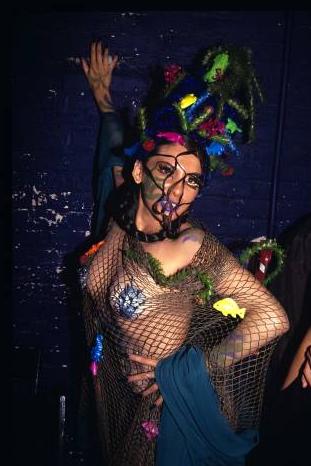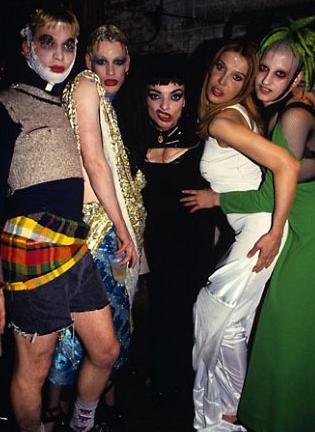
Moby talks about Gatien's influence in Limelight. Credit: Promotional photo

Nights at the Limelight. Credit: Promotional photo
Anyone who was in New York prior to 1990 will tell you it ain’t the city it used to be.
Times Square has been Disney-fied, apartment rents have skyrocketed, with no deals to be found anywhere in Manhattan, and the homeless have been shuffled off to… well, no one really knows where they all went.
And the club scene, as Limelight, a new documentary indicates, has also radically changed.
The film, directed by Billy Corben (Cocaine Cowboys), follows legendary club impresario Peter Gatien, first as his New York star rises and he becomes a powerful entrepreneur, and later when former mayor Rudolph Giuliani throws him to the wolves.
Limelight features amazing archival footage of scenesters and wannabes in Gatien’s string of famous clubs, which included the Limelight, the Palladium and the Tunnel.
Cool visitors to New York in the ’80s or ’90s made a stop at one of Gatien’s clubs just so they could drop a few names and have boasting rights back home.
As many, including Moby, remember in the film, there was something both liberating and unifying about club life back in the good old days.
Gatien’s vision involved group debauchery under one giant roof. With the help of alcohol and ecstasy, his clubbers could come together and figure out that they were, like, all in it together.
Gatien also attracted a large queer following. Andy Warhol attended the 1983 opening bash for Limelight, which was a tribute to legendary Italian filmmaker Federico Fellini.
Gatien had a knack for mixing and matching crowds: suburbanites, tourists, celebrities, and queer and trans partiers all rubbed shoulders at his parties.
This film suggests, quite convincingly, that the glory days of New York’s nightlife had a great deal to do with opening new minds to alternate (especially queer) lifestyles.
Things went south, however, with the arrival of antisocial drugs like Special K. Then came the infamous New York Club Kids of the ’90s, led by Michael Alig (who still looks mighty fine), and, well, the rest is New York nightlife history.
Alig is interviewed from prison for the film, where he is serving a sentence for the murder of Andre “Angel” Melendez, a former employee at the Limelight.
He is philosophical about what happened, but also honest and at times animated as he recalls times past.
This turning point led to a crackdown by the puritan Giuliani, who shuttered many of Manhattan’s nightclubs during his “clean up” New York City campaign.
Native Canadian Gatien was eventually deported back to Canada, where he settled in Toronto.
Limelight is engaging, and Corben packs a lot into 100 minutes, but he also injects too many snap! crackle! pop! visual effects, ensuring it sometimes looks like a cheesy ’80s music video.
The story alone would carry a documentary, but it feels as though Corben didn’t have the confidence to simply tell it; instead, he’s gussied it up with too many effects.
Still, for nightlife history buffs, Limelight is essential viewing.
Limelight opens on Sept 23 throughout the country.

 Why you can trust Xtra
Why you can trust Xtra


